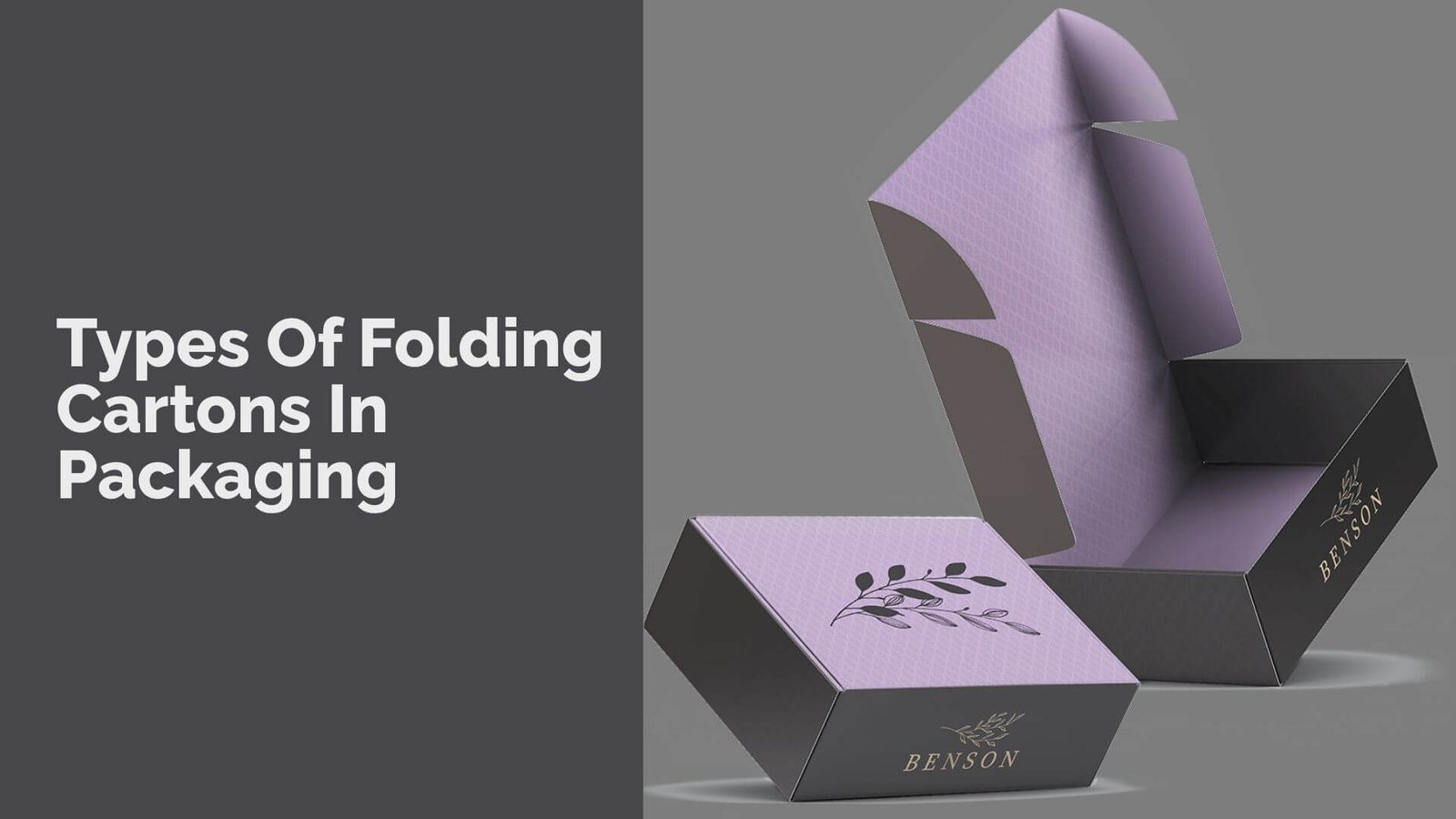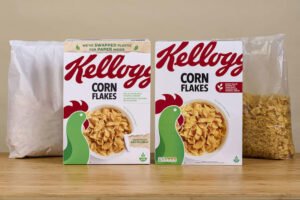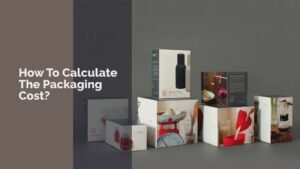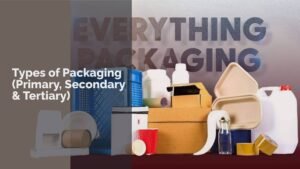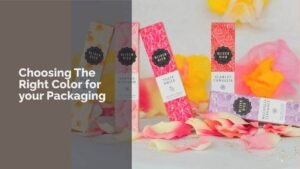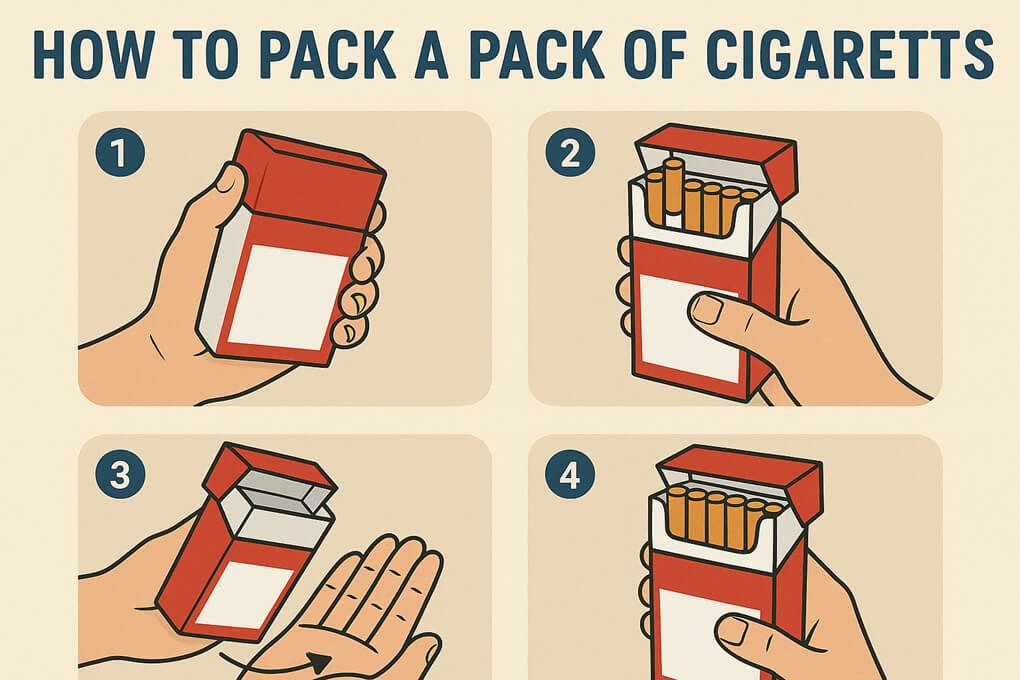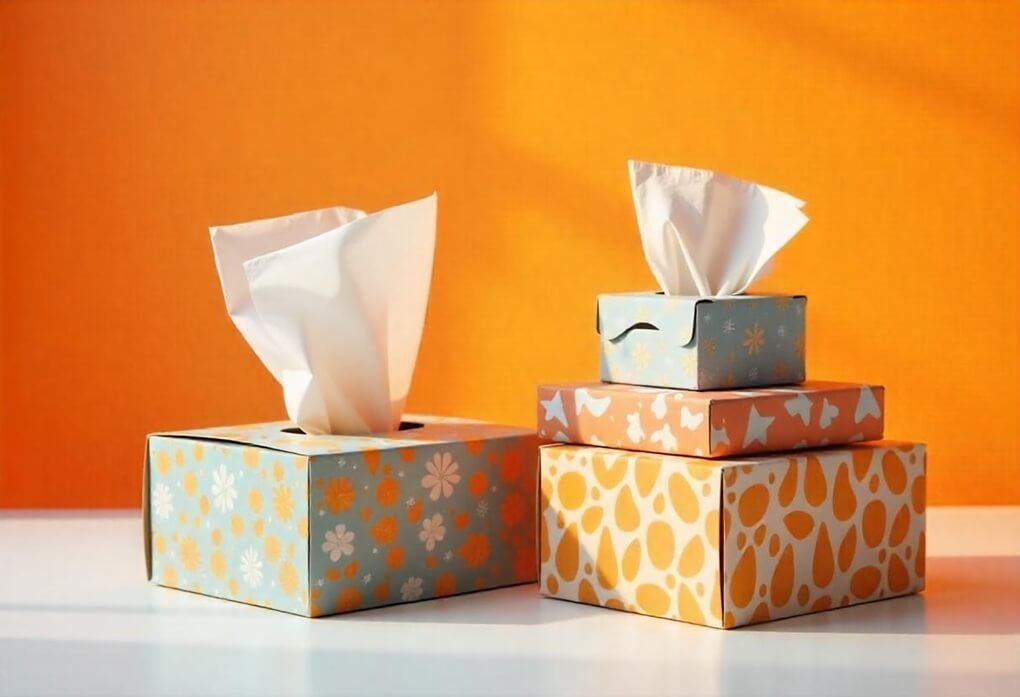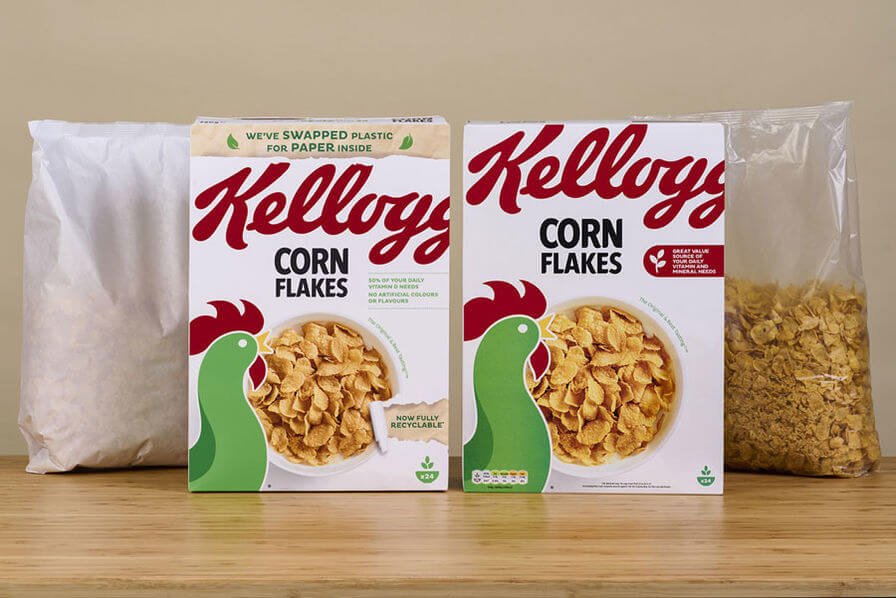Folding cartons come in various types, including straight tuck, reverse tuck, auto lock bottom, and more. Understanding all 13 types of folding cartons is essential for selecting the right packaging solution for your products.
Folding cartons offer a unique blend of functionality and aesthetics, making them a popular choice in the packaging industry. With numerous folding carton styles PDF available, brands can customize their packaging to stand out on shelves.
These cartons are not just practical; they also enhance brand visibility and appeal. Additionally, the types of cartons in packaging allow for easy assembly and transport, making them an efficient option for manufacturers.
As sustainability becomes increasingly important, folding cartons provide an eco-friendly alternative that meets modern consumer demands while maintaining high-quality standards.
What Are Folding Cartons?
Folding cartons are a type of packaging made from paperboard that can be folded flat for easy storage and shipping. They are designed to hold and protect products while showcasing the brand. Understanding the types of folding cartons available can help businesses choose the right packaging for their needs.
Folding cartons come in various styles, each serving different purposes. Common types include straight tuck and reverse tuck boxes, which are popular for their ease of assembly and cost-effectiveness.
The folding carton design allows for creative branding opportunities, as companies can print eye-catching graphics directly on the packaging. This not only protects the products but also attracts customers’ attention.
Additionally, folding cartons are lightweight and space-efficient, making them an excellent choice for shipping. Many industries, including health and beauty, food, and pharmaceuticals, rely on these cartons for their packaging needs.
With a focus on sustainability, folding cartons offer an eco-friendly alternative to plastic packaging, aligning with modern consumer preferences for greener options.
What Are The Benefits Of Folding Cartons?
Folding cartons provide several key benefits that make them an excellent choice for packaging products. One significant advantage is their cost-effectiveness. They are made from lightweight materials, which reduces shipping costs and makes them easy to handle.
Additionally, folding cartons can be produced in large quantities, allowing businesses to save on manufacturing expenses. Understanding the types of folding cartons available helps companies choose the most suitable option for their needs.
Another benefit is the versatility of folding carton designs. These cartons can be customized in various styles, such as straight tuck and reverse tuck boxes, to fit different products and branding requirements.
The ability to print vibrant graphics directly on the carton enhances brand visibility and attracts customers. Furthermore, folding cartons are eco-friendly, as they are typically made from recyclable materials, aligning with consumer preferences for sustainable packaging.
They also provide excellent protection for products during transportation and storage, minimizing damage. Many industries, including food, cosmetics, and pharmaceuticals, utilize folding cartons due to their reliability and aesthetic appeal.
Overall, folding cartons combine functionality with visual impact, making them a trusted choice for businesses looking to enhance their packaging solutions.
Types Of Folding Cartons
Folding cartons are essential packaging solutions that come in various types, each designed for specific needs. Understanding the types of folding cartons helps businesses choose the right packaging for their products, ensuring safety and appeal.
Paperboard Folding Carton
Paperboard folding cartons are lightweight and versatile, making them ideal for a variety of products. They are made from a single layer of paperboard, which can be easily printed with vibrant graphics to enhance brand visibility.
This type of carton is commonly used for packaging cosmetics, food items, and pharmaceuticals. The folding carton design allows for easy assembly and storage, as they can be shipped flat and set up quickly.
Additionally, paperboard is recyclable, aligning with eco-friendly practices that many consumers prefer today. These cartons also provide excellent protection for products during transportation, minimizing damage.
Overall, paperboard folding cartons combine functionality with aesthetic appeal, making them a popular choice for many industries.
Corrugated Folding Carton
Corrugated folding cartons are known for their strength and durability, making them suitable for heavier items. They consist of multiple layers of paper that provide extra protection against impacts and crushing during shipping.
This type of carton is often used for packaging electronics, beverages, and other fragile products. The types of cartons in packaging include various styles like slotted boxes and telescopic boxes, which can be customized to fit specific product dimensions.
Corrugated cartons also offer excellent insulation properties, protecting contents from temperature changes.
Their sturdy construction ensures that products remain safe during transport and storage, making them a reliable option for businesses looking to safeguard their goods while maintaining a professional appearance.
13 Styles Of Folding Cartons In Packaging
Folding cartons come in various styles, each designed to meet specific packaging needs. Understanding the types of folding cartons available can help businesses select the best option for their products.
Here are 13 popular styles of folding cartons used in packaging today.
1. Straight Tuck Boxes
Straight tuck boxes are a versatile choice for many products. They feature tuck flaps that close on the same side, making them easy to assemble and store.
These boxes are ideal for light to medium-weight items like cosmetics, food, and health products. The folding carton design allows for vibrant printing, enhancing brand visibility on store shelves.
Their simple structure means they can be produced at a lower cost compared to other styles. Additionally, straight tuck boxes can be shipped flat, saving space during transport. This style is perfect for brands looking for an efficient and cost-effective packaging solution that still offers a professional appearance.
2. Reverse Tuck Boxes
Reverse tuck boxes are similar to straight tuck boxes but have their flaps closing in opposite directions. This design provides a secure closure while allowing for easy access to the product inside. They are also suitable for light- to medium-weight items, including pharmaceuticals and electronics.
The folding carton styles in reverse tuck boxes allow for creative branding opportunities with high-quality graphics. Their construction uses less paper than straight tuck boxes, making them a cost-effective option for many businesses. This style is particularly popular in industries where presentation matters, as it provides an attractive way to showcase products while ensuring safety during shipping.
3. Auto Lock Bottom Boxes
Auto lock bottom boxes feature a unique design that locks automatically when assembled, providing a sturdy base without additional gluing or taping.
This style is excellent for heavier items such as bottles of wine or large cosmetics containers. The types of folding cartons that include auto lock bottoms offer added strength and stability, making them ideal for products that require extra protection during transport.
Auto lock bottom boxes ease of assembly saves time in packaging operations, which is beneficial for businesses looking to streamline their processes. With vibrant printing options available, these boxes also enhance brand visibility while ensuring product safety.
4. Snap Lock Boxes
Snap lock boxes have a bottom that securely snaps into place, creating a stable base for heavier items like electronics and beverages. This type of folding carton is designed for quick assembly and provides excellent protection during shipping.
Folding carton design allows for customization with vibrant graphics that attract consumers’ attention on the shelf. Snap lock boxes are particularly useful in industries where product integrity is crucial, such as food and health products.
Their sturdy construction ensures that contents remain secure during transport, making them a reliable choice for brands focused on quality packaging solutions.
5. One Piece Tuck Top Boxes
One piece tuck top boxes consist of a single piece of material that folds into shape, providing an easy-to-assemble option for packaging various products. This style is often used for lightweight items such as cosmetics and small electronics. The folding carton styles allow for effective branding with printed graphics on all sides of the box.
One piece tuck top boxes are cost-effective due to their simple design and can be shipped flat to save space during transport. This versatility makes them a popular choice among manufacturers seeking efficient packaging solutions that still look great on retail shelves.
6. Two Piece Boxes
Two piece boxes consist of a separate base and lid, providing extra protection and a premium feel suitable for high-end products like jewelry and luxury gifts. The design allows for custom inserts to keep items secure during transport and display.
Two-piece boxes can be tailored with unique shapes and sizes depending on the product requirements, enhancing their appeal. The types of folding cartons in this category are often used by brands wanting to create an upscale presentation while ensuring product safety. With high-quality printing options available, two piece boxes also serve as an effective marketing tool.
7. 1-2-3 Bottom Boxes
The 1-2-3 bottom box gets its name from the three steps needed to assemble it: fold the sides up, push the bottom flaps together, and lock them into place. This design offers strength and stability, making it suitable for heavier items like beverages or electronics.
The folding carton design allows for easy assembly without additional tools or adhesives, saving time during production. These boxes provide excellent protection during shipping while allowing brands to showcase their products effectively with vibrant graphics printed on all sides.
1-2-3 bottom boxes reliability makes them a favored choice among manufacturers looking to balance functionality with aesthetics.
8. Sleeve Packaging
Sleeve packaging consists of a simple sleeve that slips over another box or container, providing additional branding space without requiring top or bottom flaps. This style is cost-effective and allows brands to customize their packaging easily by sliding the sleeve over plain boxes. Sleeve packaging works well with various products, from food items to cosmetics, enhancing visual appeal through printed graphics on the sleeve itself.
The folding carton styles available in sleeve designs offer flexibility in branding while maintaining product safety during shipping. This approach is especially popular among businesses looking to reduce costs while still delivering eye-catching packaging.
9. Holster Boxes
Holster boxes are designed to hold items securely while allowing easy access through an open top or side flap. They are commonly used for packaging beverages or other cylindrical products like candles or jars.
The types of folding cartons in this category provide stability and protection while showcasing the product effectively on retail shelves. Holster boxes can be customized with vibrant graphics that enhance brand visibility and appeal to consumers’ preferences. Their unique design not only protects the contents but also adds an attractive element to product presentation.
10. Display Boxes
Display boxes are specially designed to showcase products prominently at retail locations or trade shows. These cartons often feature cut-out windows or unique shapes that draw attention from potential customers. They can hold multiple items or single products while providing ample branding space through printed graphics on all sides.
The folding carton designs used in display boxes make them ideal for promotional events where visibility is key. Brands benefit from using display boxes as they enhance product presentation while ensuring safety during transport.
11. Five Panel Hanger Boxes
Five panel hanger boxes are designed with a built-in hanger tab at the top, allowing them to be displayed easily on retail hooks or shelves. This style is perfect for lightweight items such as accessories or small tools that need visibility in stores. The types of folding cartons in this category provide convenience by allowing customers to see the product while keeping it securely packaged until purchase.
Unique design of five panel hanger boxes not only enhances brand visibility but also makes it easier for retailers to display products effectively.
12. Die-Cut Boxes
Die-cut boxes are custom-shaped cartons made using die-cutting techniques that allow unique designs tailored specifically to product requirements. These cartons can take various forms based on branding needs and product specifications, making them highly versatile options in packaging solutions.
The folding carton styles available through die-cut designs provide brands with creative freedom while ensuring product safety during transport and display. Die-cut boxes often feature intricate designs that enhance visual appeal and engage customers effectively at retail locations.
13. Boxes With Thumb Tabs
Boxes with thumb tabs include convenient cut-outs that allow users to open the box easily without damaging it or requiring additional tools.
Boxes with thumb tabs are particularly useful for packaging items like health supplements or beauty products where quick access is essential for consumers’ convenience. The folding carton designs featuring thumb tabs provide both functionality and aesthetic appeal by allowing brands to showcase their products effectively while ensuring user-friendly access at home or retail locations.
These 13 styles of folding cartons illustrate the versatility and effectiveness of folding carton packaging across various industries, helping businesses choose the right solution tailored to their specific needs.
Folding Carton Designs
Folding carton designs play a crucial role in packaging, affecting both functionality and brand perception. Understanding the various aspects of folding carton designs helps businesses create effective packaging solutions tailored to their products. Key elements include shape, size, structural components, and graphics.
Shape
The shape of a folding carton significantly impacts its usability and appeal. Different shapes can accommodate various products, from rectangular boxes for cosmetics to cylindrical designs for beverages. The choice of shape affects not only the aesthetics but also how well the product fits inside the carton.
For example, a wine bottle may require a tall, narrow box, while snacks might fit better in a wider, flatter design. Additionally, unique shapes can enhance brand visibility on shelves, making products stand out. Brands should consider how the types of folding cartons align with their product dimensions and marketing goals to create a cohesive look that attracts consumers.
Size
Size is another critical factor in folding carton design. Businesses must accurately measure their products to ensure the packaging is neither too loose nor too tight.
A well-fitted carton protects the product during shipping and handling while providing an appealing presentation.
For instance, packaging multiple items together may require larger boxes or special configurations like one-piece tuck-top boxes to accommodate different arrangements.
The types of cartons in packaging vary in size options, allowing brands to select the most appropriate dimensions for their specific needs. Proper sizing not only enhances product safety but also optimizes storage and shipping efficiency.
Structural Element
The structural elements of a folding carton include panels, flaps, and closures that determine how the box functions. These components work together to create a sturdy package that protects its contents.
For example, double-layered corrugated materials may be used for fragile items like glass jars, while lighter paperboard is suitable for less delicate products. Understanding these structural elements allows brands to choose the right materials and designs that provide adequate protection during transport.
Additionally, innovative structural designs can enhance user experience by making opening and closing easier. Brands should consider how these elements contribute to both functionality and aesthetics when designing their folding cartons.
Graphics
Graphics are essential in folding carton design as they communicate brand identity and attract consumers’ attention. High-quality graphics can elevate a product’s perceived value and differentiate it from competitors on crowded shelves.
Businesses should carefully consider their branding strategy when designing graphics for their cartons. Elements such as color schemes, logos, and typography all play a role in how consumers perceive the brand.
The folding carton design must balance visual appeal with practicality; for instance, ensuring that important information is clearly visible without overwhelming the design.
Effective graphic design not only enhances brand recognition but also conveys essential product information to consumers, making it a vital aspect of successful packaging strategies.
Printing & Finishing Options That Folding Cartons Support
Folding cartons support various printing and finishing options that enhance their visual appeal and functionality. Understanding these options is essential for businesses looking to create impactful packaging. The right choices can elevate a brand’s image and attract consumers effectively.
Printing Options
- Offset Printing: Offset printing uses rotating cylinders to transfer ink onto paperboard. This method is ideal for large orders, producing high-quality prints with vibrant colors. It is particularly effective for brands that need consistent quality across many cartons. The types of folding cartons produced using offset printing can showcase intricate designs and detailed graphics, making them stand out on shelves.
- Digital Printing: Digital printing employs inkjet or electrophotographic technologies to print directly onto the carton material. This method allows for quick turnaround times and customization without the need for printing plates. Digital printing is perfect for smaller runs or unique designs, ensuring that each carton can be tailored to specific branding needs. The final product often rivals offset quality, making it a popular choice among businesses.
- Flexographic Printing: Flexographic printing uses flexible plates to apply ink to various substrates, including non-porous materials. This method is efficient for large-scale production and offers high-speed printing capabilities. Flexo is commonly used for labels and packaging, making it suitable for folding carton designs that require durability and versatility.
Finishing Options
- Embossing and Debossing: These techniques create raised or recessed designs on the carton surface, adding texture and depth. Embossing can make logos or key design elements more prominent, enhancing brand recognition.
- Foil Stamping: Foil stamping applies metallic foil to specific areas of the carton, giving it a luxurious look that catches the eye. This technique is effective for highlighting logos or special features on packaging.
- Spot UV Coating: Spot UV coating adds a glossy finish to specific areas of the carton, creating contrast between matte and shiny surfaces. This technique enhances visual interest and draws attention to important branding elements.
- Varnishes and Laminates: Varnishes provide a protective layer that enhances color vibrancy, while laminates add durability to the carton, protecting it from moisture and wear during handling.
- Die Cutting: Die cutting allows businesses to create custom shapes and designs for their folding cartons, providing a unique look that can differentiate products in the market.
Why Are Folding Cartons So Popular?
Folding cartons have gained immense popularity in the packaging industry due to their numerous advantages. One of the main reasons is their customizability. Businesses can create folding cartons in various shapes and sizes to fit their products perfectly.
This flexibility allows for unique designs that enhance brand identity and attract consumer attention. The ability to print vibrant graphics and logos on folding cartons further emphasizes a brand’s message, making them an effective marketing tool.
Another significant advantage is their cost-effectiveness. Made primarily from paperboard, folding cartons are relatively inexpensive to produce compared to other packaging materials like glass or metal. They also ship flat, which reduces shipping costs and storage space.
This efficiency is particularly beneficial for businesses looking to minimize expenses while maintaining quality packaging.
Additionally, folding cartons are more environmentally friendly than many alternatives. They are made from renewable resources and are recyclable, aligning with growing consumer demand for sustainable packaging options. When they reach the end of their lifecycle, folding cartons decompose much faster than plastic, reducing landfill waste.
Overall, these factors contribute to the widespread use of folding cartons across various industries, making them a preferred choice for many brands.
Industries That Can Utilize Folding Carton Packaging
Types of Folding carton packaging is widely used across many industries due to its versatility and effectiveness. Understanding which industries that can utilize folding carton packaging helps businesses identify opportunities for their products.
- Food and Beverage
- Pharmaceuticals
- Cosmetics and Skincare
- Personal Care Products
- Household Goods
- Electronics
- Health Supplements
- Pet Products
- E-commerce Retail
- Tobacco Products
Advantages & Disadvantages Of Types Of Folding Cartons
Folding cartons have several advantages and disadvantages that businesses should consider when selecting packaging options. Understanding these factors can help companies make informed decisions about their products.
One major advantage of types of folding cartons is their customizability. Brands can create cartons in various shapes and sizes, tailoring them to fit specific products perfectly. This flexibility allows for unique designs that enhance brand visibility.
Additionally, folding cartons are cost-effective to produce, as they are made from affordable paperboard materials.
They also ship flat, reducing transportation costs and storage space requirements. The lightweight nature of folding cartons further contributes to savings on shipping expenses.
However, there are some disadvantages to consider. While folding cartons offer decent protection, they may not be as sturdy as rigid or corrugated boxes, which can be a concern for fragile items.
In some cases, additional inserts may be needed to ensure product safety during transport. Furthermore, the thickness of the material used in folding cartons can limit their ability to hold heavier products securely.
Despite these drawbacks, the folding carton designs available today often include various printing and finishing options that enhance their appeal and functionality, making them a popular choice across many industries.
Folding Carton vs Corrugated vs Rigid
When comparing types folding cartons, corrugated boxes, and rigid boxes, it’s essential to understand their unique characteristics, advantages, and disadvantages. Each type of packaging serves different purposes and is suitable for various products.
Folding cartons are lightweight and highly customizable, allowing businesses to create unique shapes and designs that enhance brand visibility. They are cost-effective to produce and ship flat, saving on transportation costs. However, folding cartons offer less protection than corrugated or rigid boxes, making them less suitable for fragile items. They are typically used for products like cosmetics, food, and pharmaceuticals where visual appeal is crucial.
Corrugated boxes are thicker and provide superior protection due to their layered structure. They are ideal for shipping heavier items and can be reused multiple times, offering long-term cost savings. However, they take up more space when stored and may not provide the same level of branding opportunities as folding cartons.
Rigid boxes are the most durable option, often used for high-end products like jewelry or electronics. They offer excellent protection but are generally more expensive and less customizable than folding cartons. Understanding the types of folding cartons compared to these alternatives helps businesses choose the right packaging solution for their needs while considering factors like cost, protection, and branding.
Where To Buy All Types Of Custom Folding Cartons?
To buy all types of custom folding cartons, businesses can explore various suppliers that specialize in packaging solutions. One highly recommended option is 7 Custom Boxes, which offers a wide range of folding carton styles tailored to different products. They provide excellent customization options, allowing brands to choose specific shapes, sizes, and finishes that suit their needs. With our expertise, businesses can find the perfect types of folding cartons to enhance their branding and protect their products effectively.
Conclusion
Types of folding cartons are essential for effective packaging in many industries. They come in various styles, such as straight tuck boxes and die-cut boxes, allowing businesses to choose what works best for their products.
With options like folding carton design, folding carton styles, and packaging folding techniques, brands can create unique and eye-catching packaging.
Additionally, understanding types of carton boxes and different types of packaging boxes helps companies make informed choices.
By using the right folding carton packaging, businesses can enhance their brand image while ensuring product safety and sustainability. This makes folding cartons a popular choice for many manufacturers.
FAQ’s
What are the different types of box closures?
There are many types of box closures, including tuck-end closures, snap-lock closures, and auto-bottom closures. These types of folding cartons ensure that products stay secure during transport.
What are the grades of folding carton boards?
Folding carton boards come in various grades, such as solid bleached sulfate (SBS) and recycled board. Each grade offers different strengths and finishes for specific folding carton designs.
What are the different types of cardboard cartons?
Different types of cardboard cartons include regular slotted containers, die-cut boxes, and half-slotted containers. Each type serves unique packaging needs based on product requirements.
What is a foldable box called?
A foldable box is commonly referred to as a folding carton. These cartons can be easily assembled and are used for packaging various products.
What type of closure is the best?
The best type of closure depends on the product being packaged. For example, snap-lock closures provide extra security for fragile items, making them ideal for certain types of folding cartons.

